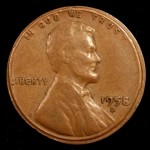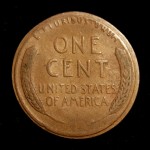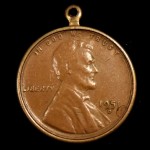A • B • C • D • E • F • G • H • I • J • K • L
M • N • O • P • Q-R • S • T • U • V • W • X-Z
Welcome to the Lincoln Cent Forum Glossary.
Use the alphabetical links above to navigate to the desired term.
This glossary of terms was written and compiled by Will Brooks with the help of our forum members. A huge thanks to everyone who contributed knowledge, ideas, words, and photos to make this growing educational resource possible. Special thanks to Richard Cooper, aka “Coop” who donated many of the photos.
E Pluribus Unum: Latin words meaning “Out of many, one.” These words are one of the devices that appear on the reverse of all Lincoln cents.
Early Die State: The very first coins struck by a new die are considered to be early die state. These coins are usually more prized by collectors as they exhibit the crispest devices and a lack of the attributes associated with die deterioration. These cents can sometimes exhibit proof-like features.
Early Releases: A designation used by NGC on their holders to denote coins released in the first month of a year’s production. See First Strikes.
Edge: The circumferential “third surface” of a coin on which the coin could roll or spin. On a Lincoln cent, the edge is always smooth, not reeded like on some other coinage. This term is sometimes mistakenly used to refer to the “rim,” which is a different part of the cent. The rims are the raised portions that encircle and are part of the obverse and reverse. The edge is the surface between the obverse and reverse.

Egg Nog: The favorite beverage of coppercoins.com attributor Bob Piazza. Also, a euphemism used on the forum to refer to alcoholic beverages. Caricature courtesy of Jacob.

Ejection Doubling: See Machine Doubling
Encased Cent (Ex-encased Cent): A cent that was once kept in a bezel as a piece of jewelry or “lucky” cent. Many of these ex-encased cents will exhibit damage in the form of a flattened rim from the bezel they were in. Pictures courtesy of forum member mrmike916.



Engraver: A position at the U.S. Mint of a person responsible for conception and creation of coin designs. Notable engravers of the Lincoln cent era include Victor David Brenner, who designed the Lincoln cent’s obverse and the wheat reverse used from 1909-1958; Frank Gasparro, who designed the memorial reverse used form 1959-2008; and Joseph F. Menna who implemented the shield reverse designed by artist Lyndall Bass and used 2010-present. The 2009 cent reverse designs each had different designers and sculptors, and like the previous designers, their initials all appear on their respective designs.
Engraving: The practice of carving devices into a die. In the Lincoln cent series, many master dies had the last 1 or 2 digits of the date engraved into them after they were hubbed by the master hub. This way, the same master hub could be re-used in subsequent years.
Engraving Doubling Master hubs were usually made without the last 1 or 2 digits of the date on them, so that they could be used over again in subsequent years. This means that the final digit or 2 of the date had to be engraved into the master die after it was made. This engraving of the digits often showed inconsistencies which often resembles doubling of those digits. Just a few of the more noticeable years of this are 1960 small date on the 6, 1965 on the 5, 1973 on the 3, 1940 on the 4, 1941 on the 4, and 1944 on the 44. Photo illustrations of these can be seen Here.
Error: An abnormal coin produced by the mint resulting from a manufacturing defect in the planchet, a post-manufacturing issue with the die, or a mechanical failure of some kind during the strike. Most “mistakes” made to the die DURING its creation, such as re-punched mint marks, and doubled dies, are referred to as die varieties and are NOT considered errors by the numismatic community. The list of errors is lengthy, but include such things like off-center strikes, die clashes, lamination errors, cuds, die cracks and die chips, and misaligned die strikes or double strikes, just to name a few. The most comprehensive list of errors and examples can be seen at error-ref.com.
Extremely Fine: A grading standard of 40-49. Denoted EF or XF. See our grading guide Here.